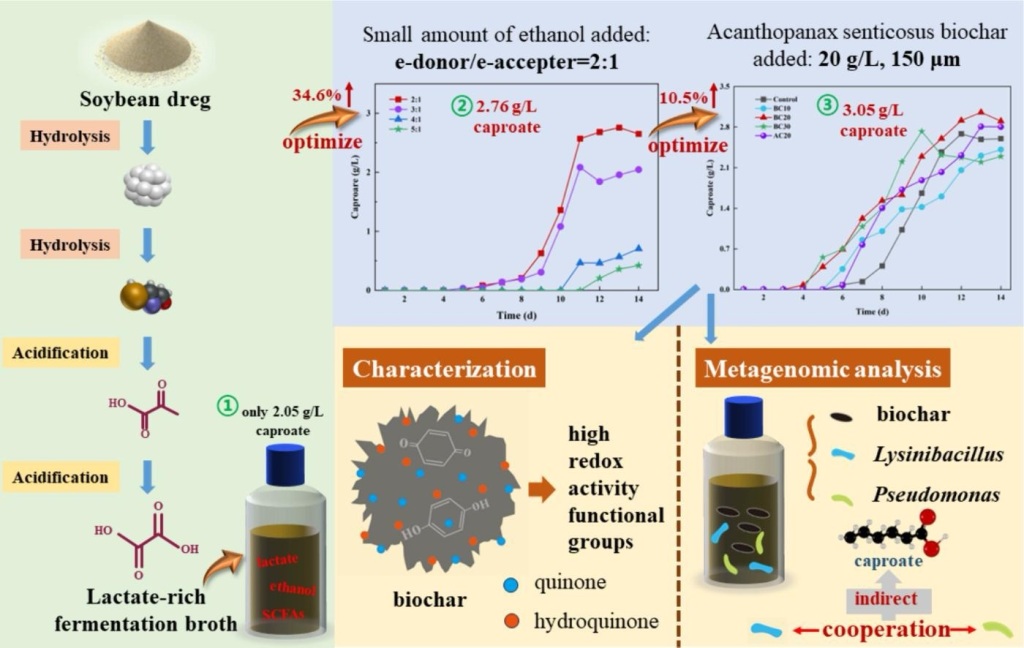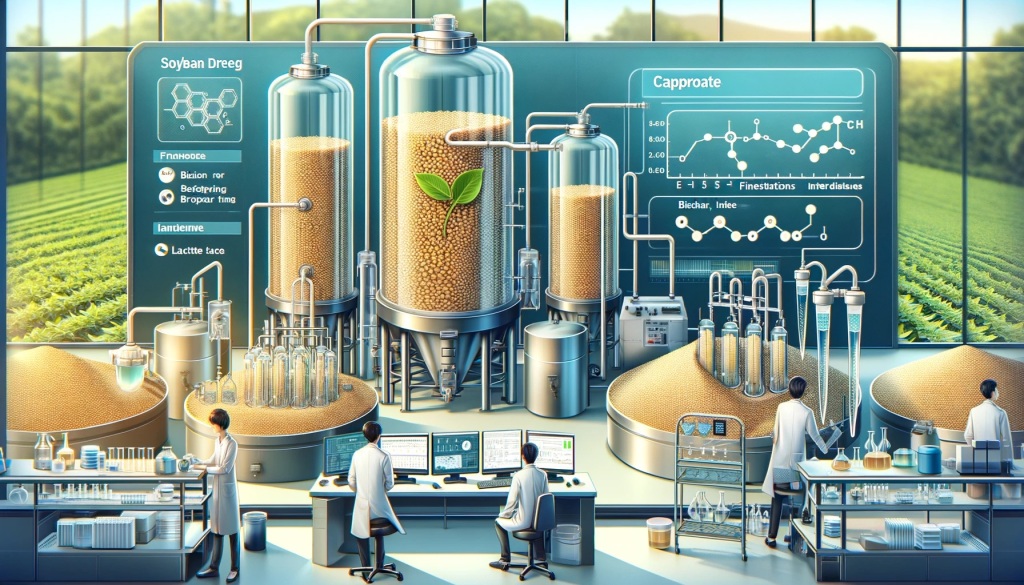
A recent study published in Bioresource Technology explores an innovative method to transform soybean dreg (SD) into valuable caproate, addressing the environmental issues posed by this agricultural waste. The researchers, led by Yang Lv and colleagues, propose a novel strategy using lactate as an intermediate and biochar as a mediator to enhance caproate production.
Soybean dreg, a byproduct from making tofu and soymilk, often ends up in landfills due to its high moisture content and spoilage risk. To tackle this, the study optimized conditions for converting SD into lactate-rich broth, achieving 2.05 g/L of caproate through direct fermentation. By adding ethanol, they boosted caproate production to 2.76 g/L. The most significant increase came with the addition of biochar, raising production to 3.05 g/L and shortening the lag phase.
Biochar’s effectiveness lies in its surface quinone and hydroquinone groups, which enhance electron transfer, upregulating key genes involved in the chain elongation process. This method also encouraged the growth of Lysinibacillus and Pseudomonas, bacteria crucial for the conversion process.
This study is the first to demonstrate caproate biosynthesis from soybean dreg, offering a sustainable solution for its utilization. By leveraging lactate, ethanol, and biochar, this approach not only mitigates waste disposal issues but also adds economic value to a common byproduct.






Leave a comment